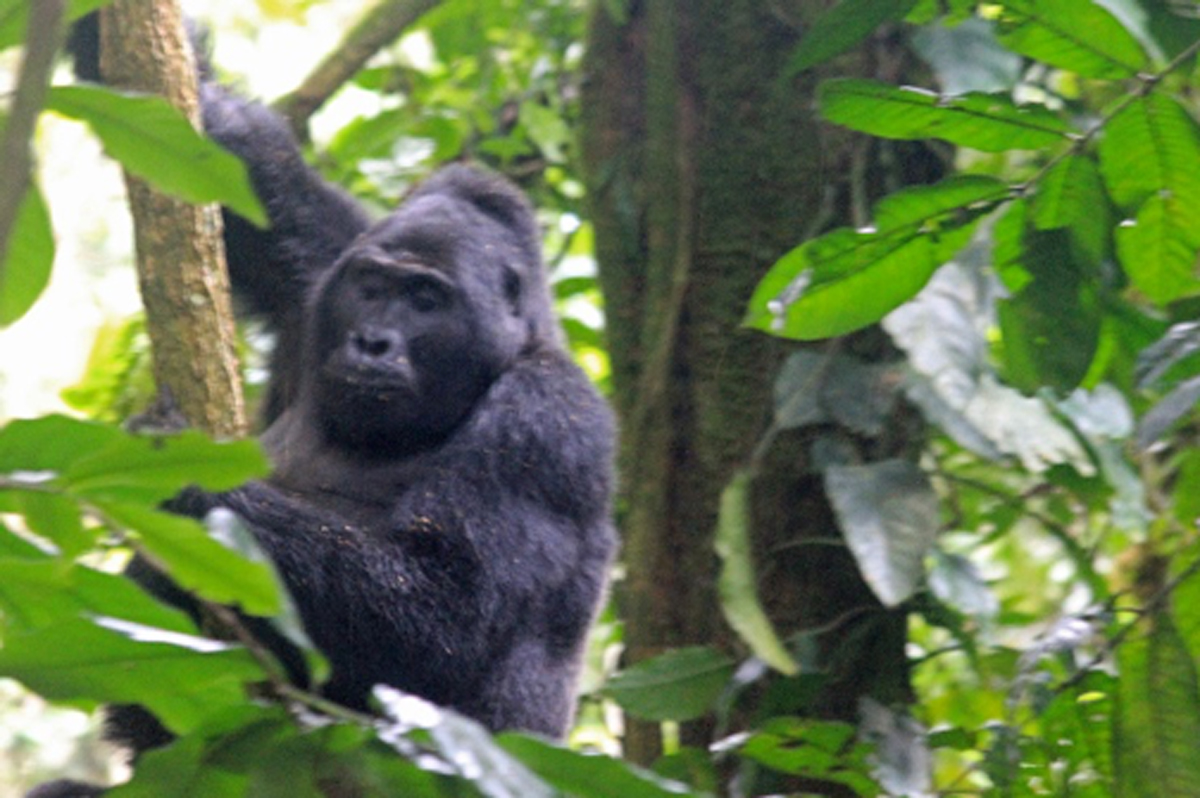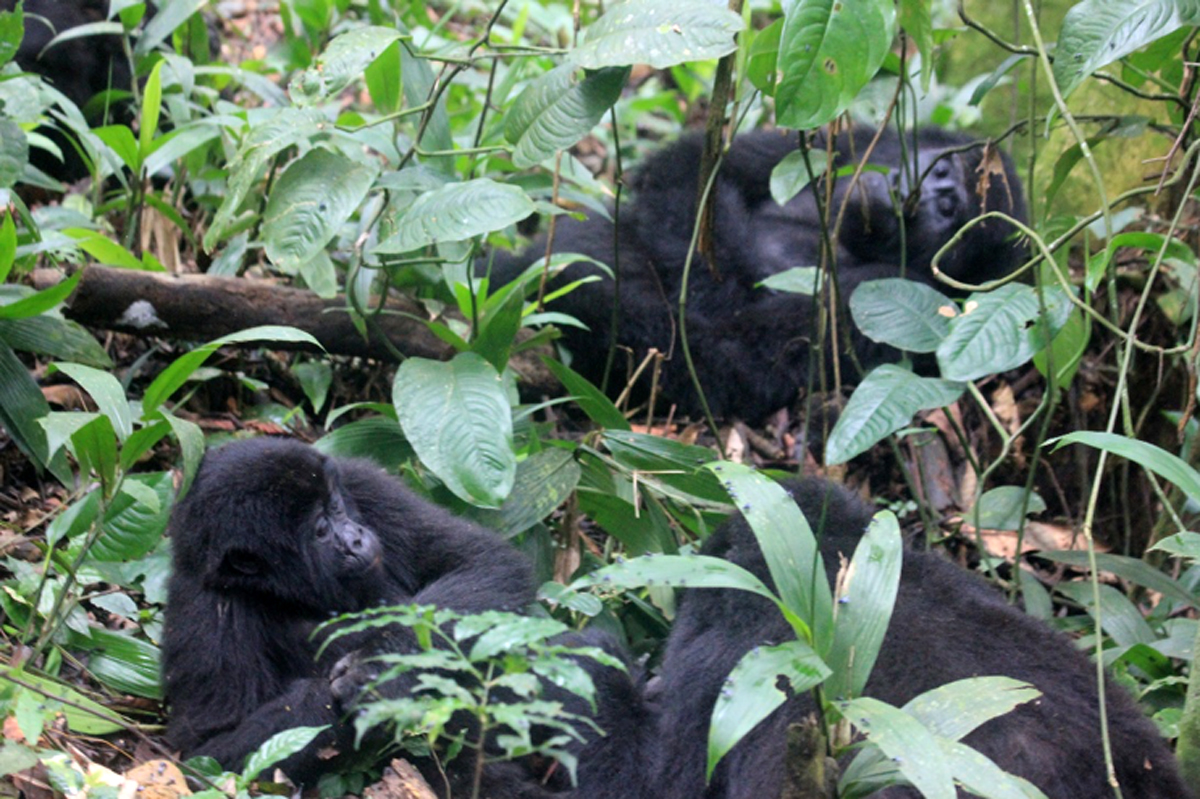 Everything You Need to Know about Gorilla Trekking
Everything You Need to Know about Gorilla Trekking
Wildfoot Travel’s Debbie Granger hopped on a plane to Uganda recently, in search of Mountain Gorillas. Here, she tells us about her experience on a Gorilla Trek.
If you have already done a safari, you have probably ticked off “The Big 5”, zebra, giraffe and hippos from your “Must See” list. But how about the Mountain Gorillas?
They may not be the easiest animals to find; the gorilla permit is pretty expensive (currently US$600 per person); and it will require a bit of an effort on your behalf to go and seek them out, but WOW! Once you find them, your allotted hour, will evaporate so quickly.
To quote Sir David Attenborough – “There is more meaning and mutual understanding in exchanging a glance with a gorilla than with any other animal I know. Their sight, their hearing, their sense of smell are so similar to ours that they see the world in much the same way as we do. We live in the same sort of social groups with largely permanent family relationships. They walk around on the ground as we do, though they are immensely more powerful than we are. So if there were ever a possibility of escaping the human condition and living imaginatively in another creature’s world, it must be with the gorilla.”
What can I expect from my Gorilla Trek?
Remember that just 80 people are allowed to see the gorillas in their natural habitat each day. Because their habitat is very fragile, every time you walk in this forest you leave a footprint.
On arrival at the Gorilla Centre, you will have a briefing and you are allocated to your gorilla family, in groups of up to 8 people plus your official park ranger and porter if you choose to have one. Some treks can take up to 4 hours in each direction, so it’s a really good idea to let them know what your fitness level is, on arrival. The hikes can be quite challenging due to the terrain and undergrowth. Humidity can be high and it can be muddy. If you decide to hire a porter, the cost is about $15 to $20, they will carry your bag for you, and assist you up and down any difficult hills. By hiring the porter you are also providing a valuable source of employment for locals.
So, once you come across your gorilla family, it is time for you to stand and watch in awe. Anticipation runs high, hearts beat faster, the group goes silent whilst waiting for the group to appear. The park ranger makes little grunting noises to communicate with the gorillas, and then you hear the rustle in the trees as the gorillas finish off the last bits of their breakfast.
One by one, they make their way down to the ground – a female adult, followed by a stunning Silverback, an adolescent male, followed by another female with a baby clutching to her body. This is the moment that you’ve been waiting for. Trying to half guess where they are going to settle; hands shaking as your camera points in their direction, focusing on the group, and then taking single shots. The Silverback invariably takes up his position sprawling out on the floor, keeping an eye on the youngsters who are play-fighting, and then finally with a grunt lies back and goes to sleep. The mother starts to groom her baby, planting kisses on its head. Meanwhile, the adolescent male and it’s much younger sibling start up a game of chase and fight. The little one is so brave; beating his chest and shouting at his older brother, who in turn chases him back around the trees tumbling and rolling amongst the vines. And then all too soon, your hour is up. You start making your way back towards the centre – unable to speak, smiling like a Cheshire cat, processing everything that has just taken place right in front of your feet. Memories that you will never forget; an hour that you will treasure forever; the knowledge that your visit has helped these magnificent beasts to survive.
How should you prepare for this trip?
Wearing the right clothes and having the right equipment is paramount. Long sleeved shirt, preferably lightweight and moisture-controlled; Long trousers; Comfortable, Sturdy walking boots that you have broken-in; Gaitors; A light, waterproof raincoat or poncho is essential; Gardening gloves to protect your hands when grabbing trees, vines and branches etc.
A good camera and the knowledge of how to use it! How disappointed would you be if your photos were just a blur! Or your smart phone to capture video footage. But don’t spend your whole hour looking through the lens – you need to experience the action too.
Small denominations of cash – you will need to pay your porter (US Dollars or Ugandan Shillings are fine. Expect to tip around $20 for the porter and $10 for the park ranger)
A waterproof rucksack with a bottle of water and some snacks if you intend to do the longer trek. Be honest about your physical fitness. There is no point in taking the long hike if you are not used to hiking/walking. The mountains are pretty high, and you may experience shortness of breath along the way.
What do we know about todays’ Gorillas?
According to the International Union for Conservation of Nature (IUCN), gorillas have gone from critically endangered to endangered – Despite this good news, this is still only 2 classifications away from being completely extinct.Thanks to “collaborative conservation efforts across country boundaries and positive engagement from communities living around the mountain gorilla habitat”, numbers have increased. Back in 2008, there were just 680 gorillas according to an assessment by the IUCN. This year has seen those numbers increase to over 1000, which is the highest number ever recorded. This is due to conservation efforts such as snare removals and anti-poaching patrols, community support projects and regulated tourism.
Mountain gorillas cannot survive in zoos as they cannot survive in detention. They can only be found and seen in Africa – Uganda, the Democratic Republic of Congo and Rwanda.
What do Mountain Gorillas look like?
The males can grow to 6 ft tall and can weigh between 350 -500 pounds. They are strong, muscular and have long arms – they can stretch to 7 feet!. As they mature, the hair on their back turns silver, which is where the name Silverback comes from. Adult males also have a prominent sagittal crest – this is a ridge of bone running lengthwise along the midline of the top of the skull.
The female adults usually weigh about half as much as adult males at 150-250 pounds. They are also shorter than the males – 4 ft 1 in to 4 ft 11 in, with a smaller arm span. The females mature around 10-12 years of age, and this is when they will have their first-born. The gestation period is 8.5 months and have four-year interbirth intervals. This is one of the reasons that makes it difficult for gorillas to recover from population declines.
How do Mountain Gorillas Feed?
A gorilla’s day is divided between rest periods and travel or feeding periods. They mostly eat foliage, such as leaves, stems, pith, and shoots, while fruit makes up a very small part of their diets. Mountain gorilla food is widely distributed and neither individuals nor groups have to compete with one another. Despite eating a few species in each habitat, mountain gorillas have flexible diets and can live in a variety of habitats.
Uganda isn’t just about the Gorillas, but it may well be a once in a lifetime experience. As you browse through your photos in years to come, I dare you not to smile as you remember the antics of these magnificent animals, or to reminisce at the total love you could sense between mother and baby. Memories, photos and video footage to cherish



